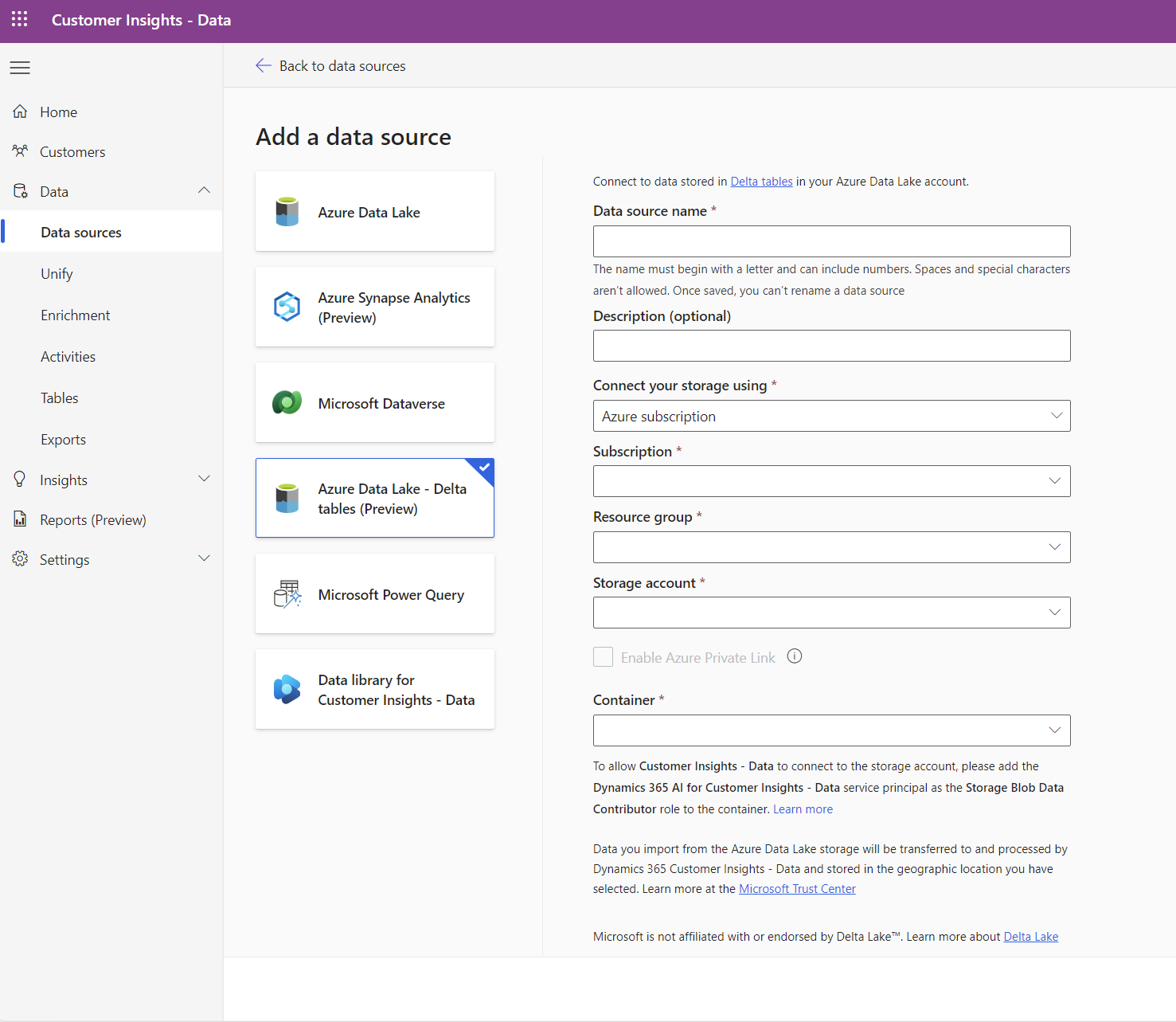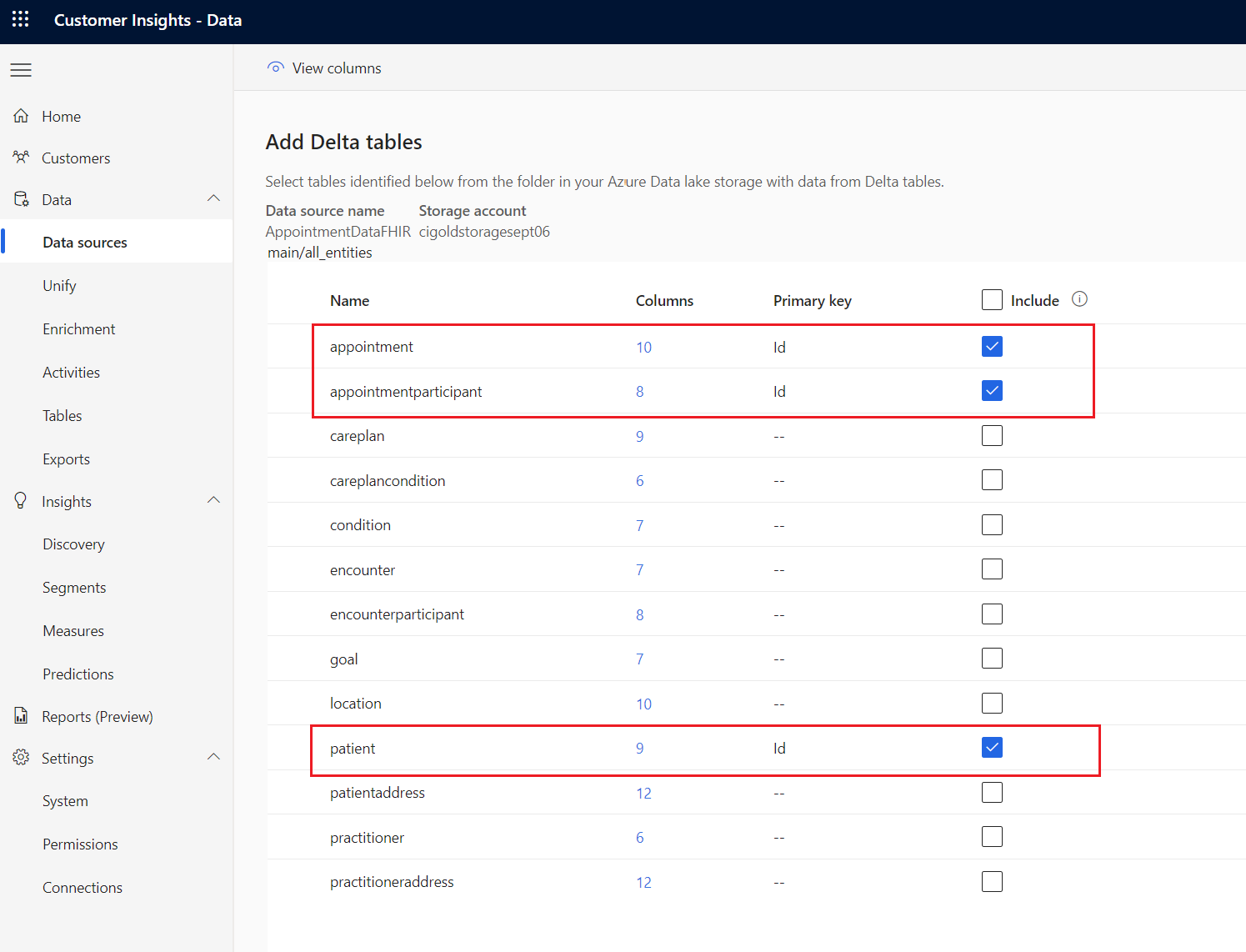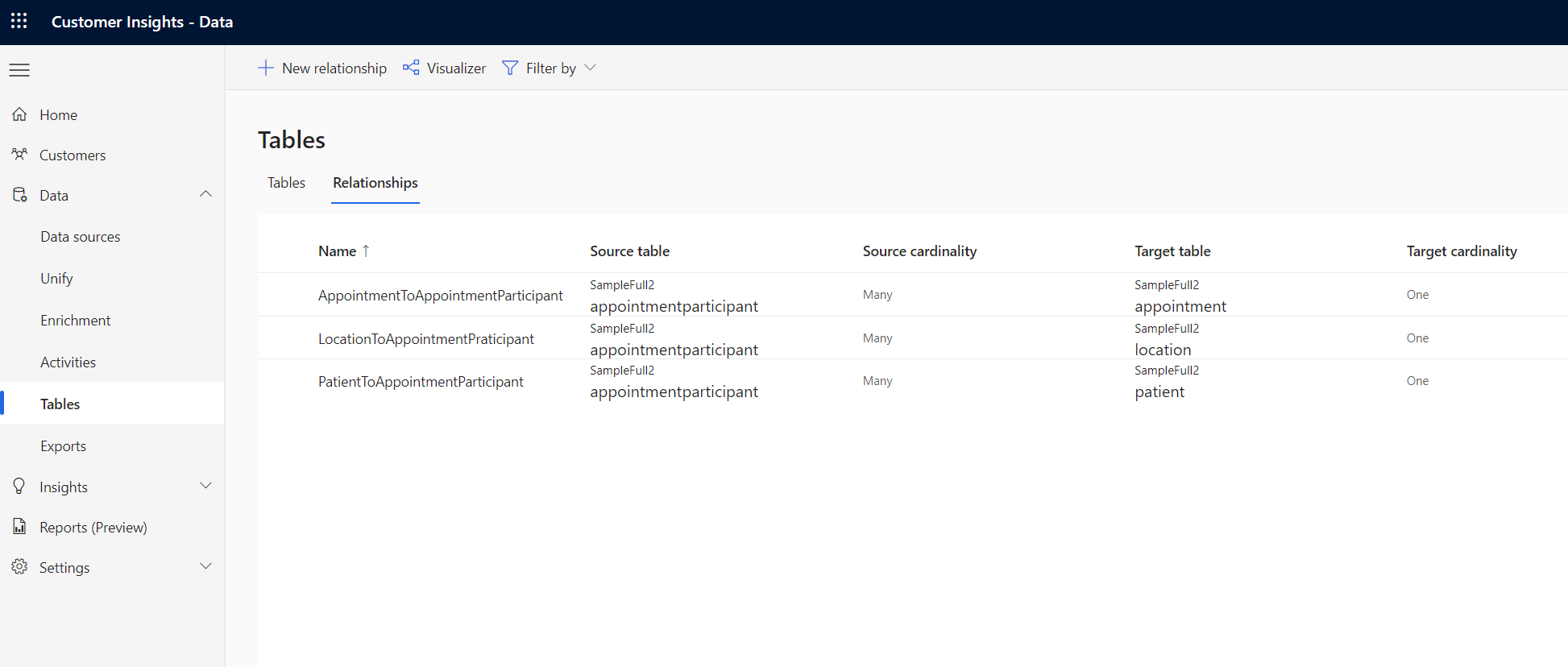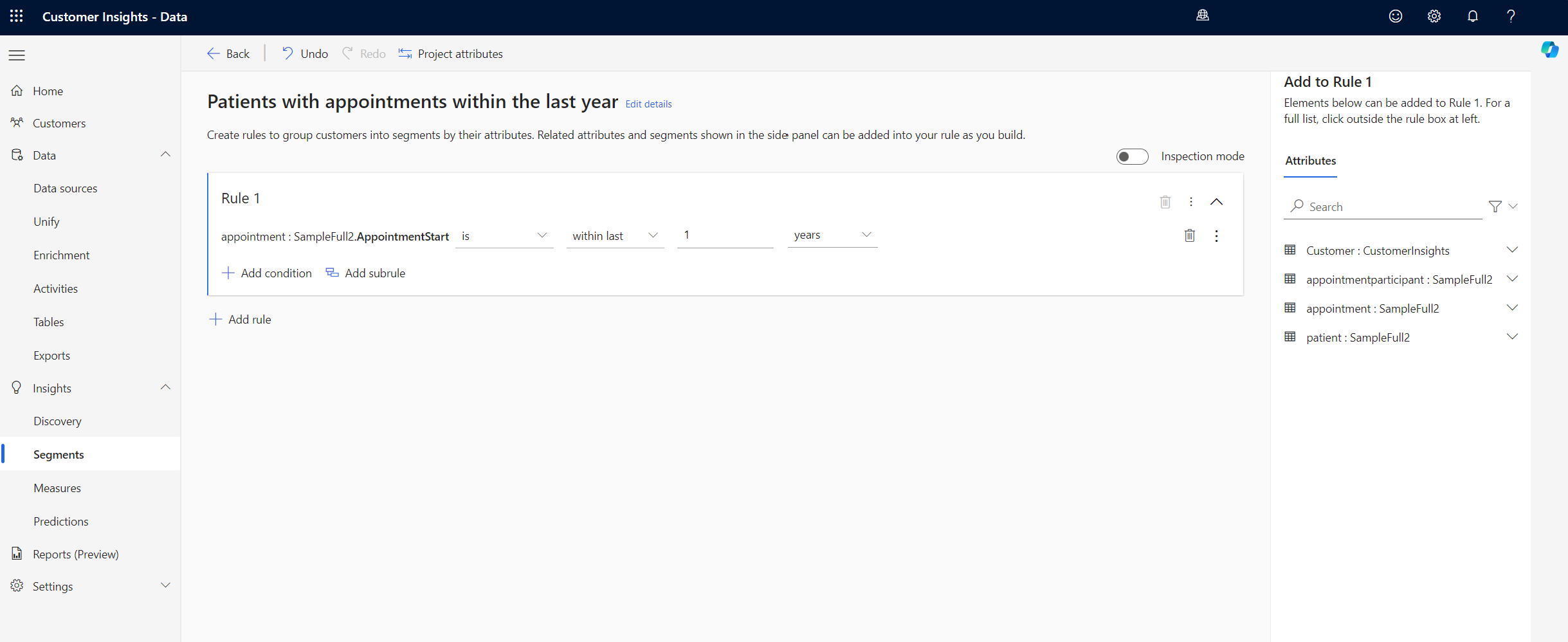Use Dynamics 365 Customer Insights - Data preparation in healthcare data solutions
The Dynamics 365 Customer Insights - Data preparation capability in healthcare data solutions connects Dynamics 365 Customer Insights - Data to your Fabric OneLake. You can use this capability to create patient or member lists for outreach. To learn more about the capability and understand how to deploy and configure it, see:
- Overview of Dynamics 365 Customer Insights - Data preparation
- Deploy and configure Dynamics 365 Customer Insights - Data preparation
Dynamics 365 Customer Insights - Data preparation has a direct dependency on the healthcare data foundations capability. Ensure you successfully set up and execute the healthcare data foundations pipelines first.
Prerequisites
- Deploy healthcare data solutions in Microsoft Fabric
- Install the foundational notebooks and pipelines in Deploy healthcare data foundations.
- Deploy and configure Dynamics 365 Customer Insights - Data preparation
Run the Customer Insights data pipeline
In your healthcare data solutions environment, open the healthcare#_msft_customer_insights data pipeline.
Select the Run button.
After the pipeline runs successfully, your data becomes available for use in the Customer Insights - Data application.
Set up Customer Insights - Data
After you install and run the Dynamics 365 Customer Insights – Data preparation pipeline, head to your Customer Insights – Data environment for further configuration.
Go to your Customer Insights - Data environment created in the Prerequisites step.
Select Data > Data sources > + Add a data source.
Select the Delta tables data source. Enter the details as instructed in the form.
Provide the connection details to the Azure Data Lake Storage Gen2 storage account created in Prerequisites.
Select Next to see a folder named all_entities. Open the folder to view all the resources available for selection.
Depending on your requirement, select all or some of the entities. To select an entity, select one or more checkboxes under the Include column and specify a Primary key value.
In the following example, the goal is to create segments around patients and their appointments. So, we select the three related entities and select Id as the primary key for each entity.
After entity selection, select Save and wait for the data source refresh to complete.
After Customer Insights – Data ingests the data, the utilization follows the same process as any other data source. The Patient entity needs to be unified into customer profiles. If you have an alternative patient data source, the application of matching rules ensures the creation of customer profiles from all available sources.
To build a wide range of segments based on the unified patient profiles, you must set up relationships between the tables. To discover all the possible relationships, review the entity relationship diagram in Data capabilities.
Here's an example of a few relationships created from the three entities imported in the example explained in the setup steps:
Run analytics
With the data appropriately configured, you can use the analytics capabilities within Customer Insights – Data. Here are some of the analytics capabilities that you can use:
Enhance unified profiles with predictions, activities, and measures.
- Select from an expanding library of enrichment providers to enrich your customer data.
- Use out-of-box prediction models to predict churn likelihood or expected revenues.
- Set up customer activities based on ingested data and visualize interactions with your customers in a chronological timeline.
- Create and manage measures to gauge your business goals and key performance indicators.
Create segments for marketing journeys.
Create and manage segments (subsets of your customer base) to target promotional campaigns, sales activities, and customer support actions.
The following example shows a segment of all patients with appointments in the past year.
Segments created in Customer Insights - Data are automatically available in your connected Dynamics 365 Customer Insights – Journeys instance.



